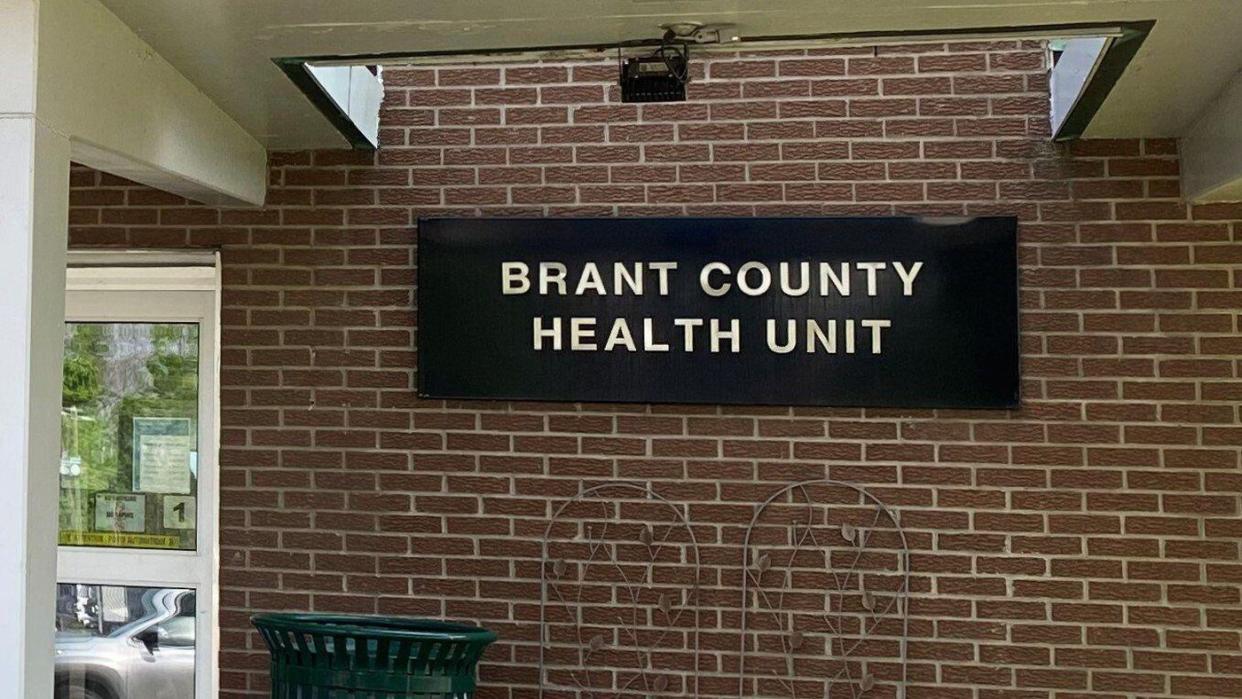New report shows ‘striking’ rate of COPD, lung cancer in Brant. Here’s what could be causing it.

Residents of Brantford and Brant County have higher rates of chronic obstructive pulmonary disease (COPD), lung cancer and other respiratory diseases than the rest of Ontario, according to a recent report from Brant County Health Unit (BCHU).
“The Burden of Chronic Disease in Brant,” which came out in May, examines the effect of long-term illnesses — such as diabetes, hypertension, cancer and asthma — on residents of Brantford and Brant County.
Using figures from Public Health Ontario’s snapshots, Cancer Care Ontario and IntelliHealth Ontario, the report uses the most recent data on the subject, which in some cases is from as far back as 2014, the report said.
The report used the 2011 Canadian population to calculate age-standardized rates.
While the area was on par with the rest of the province in terms of the incidence of diabetes and hypertension, and fared slightly better than the province for asthma, it did fall behind on several — primarily respiratory — health concerns.
The report showed:
Brant’s age-standardized rate of lung cancer was nearly 75 per capita, compared with just over 65 for the rest of Ontario. (Using Cancer Care Ontario data from 2016 to 2018.)
Brant’s age-standardized rate of COPD was 435 per capita, compared with 339 for Ontario. (The report did note to interpret the data — collected in 2020 by Public Health Ontario — with caution, due to “changes in health-care accessibility and behaviours of people seeking health care during the COVID-19 pandemic.”)
In 2022, the rates of hospitalization for most of the chronic conditions — particularly respiratory diseases and diabetes — were higher in Brant than Ontario.
Why are Brant residents faring worse for respiratory health?
In a call with The Spectator, Dr. Dawn Bowdish, executive director of Firestone Institute of Respiratory Health (FIRH) at McMaster, said the lung cancer difference and COPD rate were “really striking.”
“When we start seeing huge health disparities like that, we immediately think about health-care access, and especially specialist care and screening,” Bowdish said.
There’s also a rural-urban divide when it comes to health care, with diagnosis, preventive care, early care and treatments less accessible to people living in rural areas, she said.
A Google search turns up limited specialized respirologists in the area, and when patients have to travel further for care, they “tend to put off those specialist visits too long,” Bowdish said.
An accompanying report from the health unit, “Chronic Disease Risk Factors Among Brant Residents,” shows nearly 19 per cent of Brantford-Brant residents self-identified as smokers in 2019-20, compared with just over 12 per cent in Ontario.
The rate has come down from just over 24 per cent of Brant residents over 12 smoking in 2017-18.
It’s also “really well-documented” that serious chronic lung disease like COPD and lung cancer — both getting and surviving it — correlates with socioeconomic factors, Bowdish said.
Broader factors affecting respiratory health
With a higher population of older adults, one can “reasonably expect people to have these interstitial lung disease, COPD, or other sort of breathing disorders that come with age,” Bowdish said.
The “family health-care crisis,” could contribute to later detection, as people may put off addressing nagging concerns “because it’s just so difficult to get to your primary-care provider,” meaning it takes even longer to get referred to a specialist and get the care they need, she said.
And while “many public health units are trying to get more spirometry,” a breathing test for measuring lung health and diagnosing COPD, they are “really struggling” to get the resources and specialists to allow them to do that, Bowdish said.
Early diagnosis is key
As a disease that largely affects “the grandmas and grandpas of the world,” Bowdish said COPD doesn’t necessarily get “the attention it needs,” but it’s a major contributor to long hospital wait times.
In 2021-22, the rate of hospitalizations for COPD was the highest in Brant compared with all the Ontario health units, according to a Public Health Ontario’s health equity snapshot, which was not part of the report.
“The economic cost of having people walking around with undiagnosed COPD or suboptimally treated COPD is massive,” Bowdish said.
Early diagnosis and the appropriate treatment — which is typically overseen by a family doctor — and preventing hospitalizations is key for folks living with COPD, Bowdish said.
Similarly, the survival rate for lung cancer is linked to early diagnosis, Bowdish said.
The problem is, people can’t sense pain in the lungs, meaning initial symptoms might be feeling short of breath or struggling with the stairs — which many people attribute to getting older, Bowdish said.
In an ideal situation, everyone who is over 50 and a smoker — or has risk factors like a family history — would be screened, she said.
“Do your doctors a favour and get checked out preventively and advocate as much as you can” for better health care in rural areas “because this is a political problem, not a personal problem,” she said.
Celeste Percy-Beauregard’s reporting is funded by the Canadian government through its Local Journalism Initiative. The funding allows her to report on stories about Brant County. Reach her at cpercybeauregard@torstar.ca.
Celeste Percy-Beauregard, Local Journalism Initiative Reporter, The Hamilton Spectator


